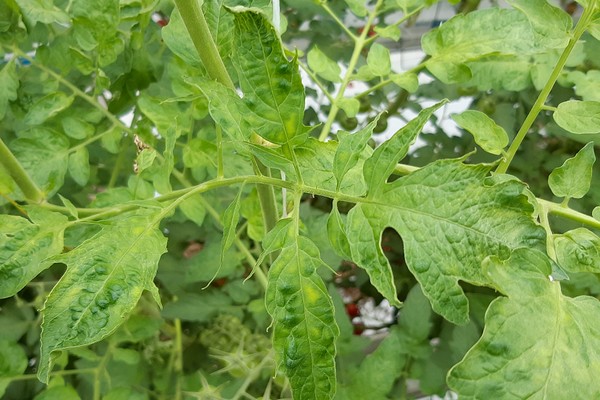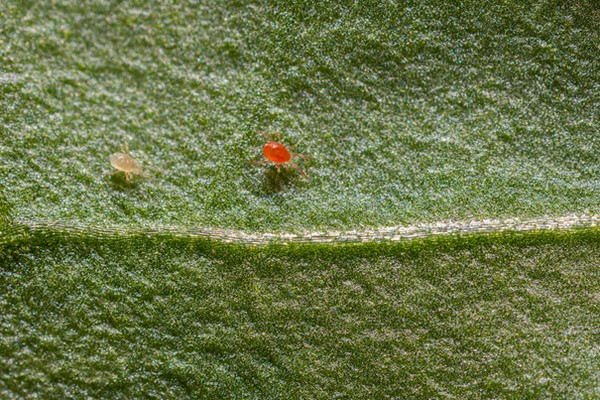A total of 5 tomato growers, worth over than 39 hectares of greenhouse production, have successfully combatted the Tomato brown rugose fruit virus (ToBRFV) in the Netherlands. Previous contamination has also been successfully tackled at a plant grower. Measures are in force at 4 growers who received plants from the grower.
Control was not successful everywhere, according to an NVWA update and a new Pest Report, because ToBRFV was also found in the new crop at 4 locations.
In total, 434.5 hectares are currently still officially supervised, accounting for 23 production locations in total.
An infected crop, photo: NVWA
23 infections
The position as of 29 December 2020 is therefore as follows:
8 in the municipality of Westland
5 in the municipality of Hollands Kroon
2 in the municipality of Lansingerland
1 in the municipality of Reimerswaal
1 in the municipality of Haarlemmermeer
1 in the municipality of Horst aan de Maas
1 in the municipality of Goeree Overflakkee
1 in the municipality of Brielle
1 in the municipality of Steenbergen
1 in the municipality of Zuidplas
1 in the municipality of Westvoorne
Growers have now (partly) switched to other crops after an infection because of the virus. They too, like the growers who have started growing tomatoes again, remain under supervision and must be officially released after a repeat inspection.
Plant grower as a source
The case with the plant grower came to light when a grower found symptoms in his young tomato crop at the end of last summer. This was reported, after which the NVWA started a tracing investigation. During that investigation, a second grower came forward, who also had symptoms in a young crop from the relevant plant breeder.
Inspectors then extensively inspected and sampled all batches of plants at the plant grower. Contamination was found in two batches of plants. Due to good growing conditions, these plants were delivered earlier than the original schedule, so that the results of the investigation were not known until after delivery.
If all seed lots are tested negative at a plant grower, and the grower agrees to receive the plants, shipping is possible to a grower in the Netherlands.
Harvest loss and additional costs
The 4 growers who received the plants are currently applying strict hygiene measures. Harvesting and sales of tomatoes can continue.
Growers report crop losses of 5-30% in case of contamination. In some cases it was also less than 5% for growers. The NVWA estimates that this costs a grower 5 to 10 thousand euros per hectare for the removal and disposal of the crop.
Source research on seed lots
The NVWA reports at least 3 sources for the outbreak of the virus in the Netherlands. Until now, positively tested seed lots could not be linked to specific outbreaks among growers. In 4 cases, testing seed lots with affected growers resulted in a positive test. It is not clear whether the aforementioned seed batch also led to infection here, as sequencing of the virus was not possible.
Duty to report
Since 1 November 2019, the ToBRFV has been designated by the European Commission as an organism that is subject to control (quarantine pest). That is why there is a duty to report for anyone who suspects the presence of this virus. If one does not report, then there is a violation and the NVWA will enforce.
The virus, which causes serious damage to pepper and tomato crops, is not dangerous to humans.











